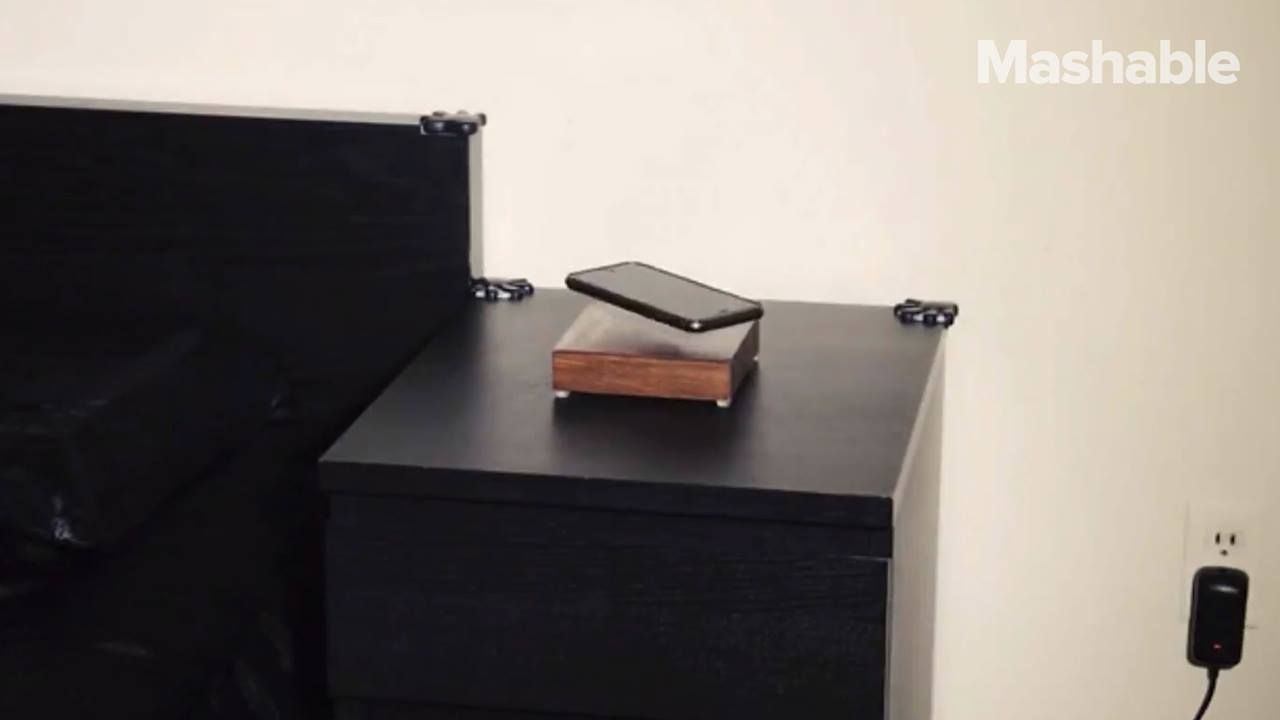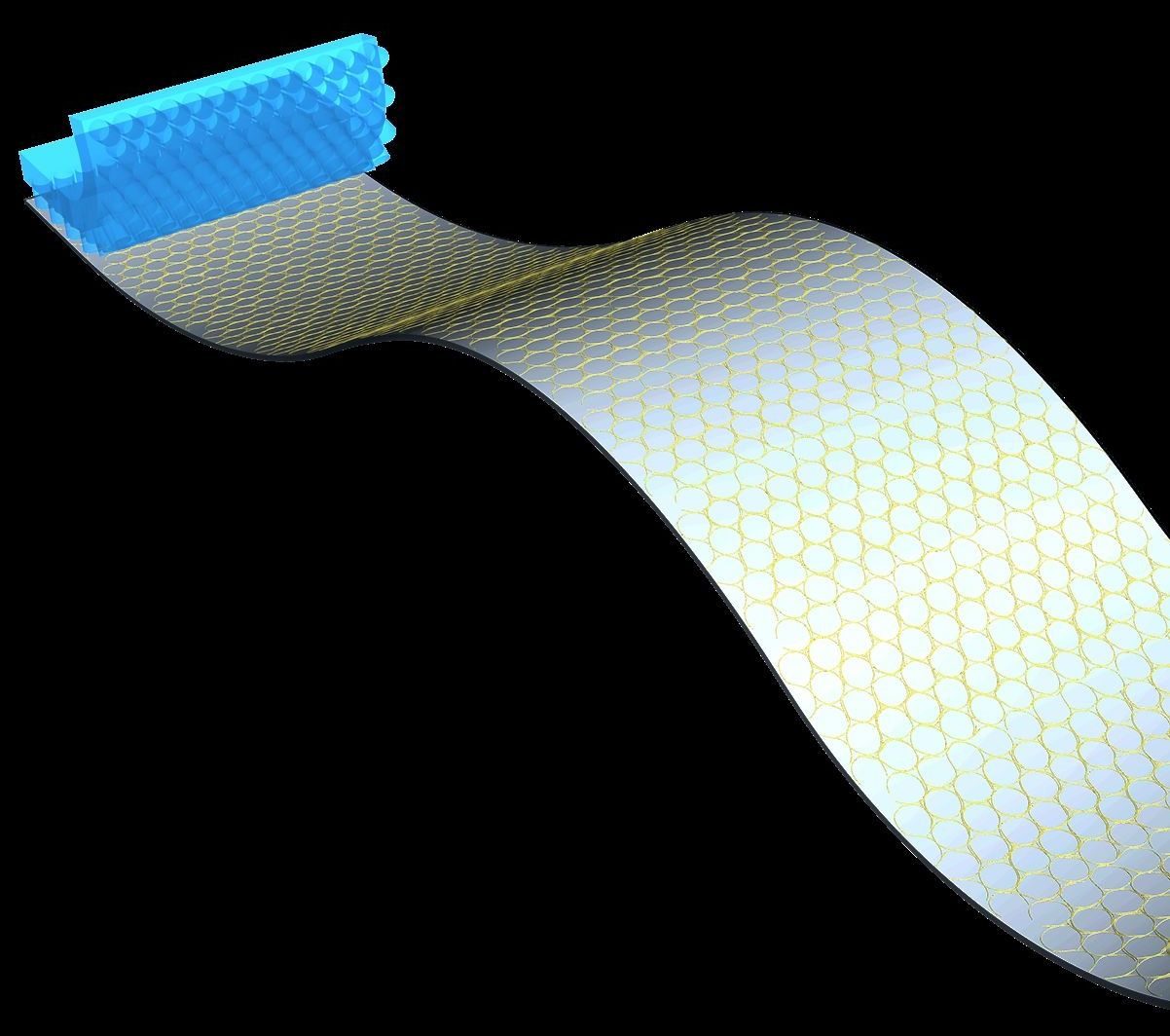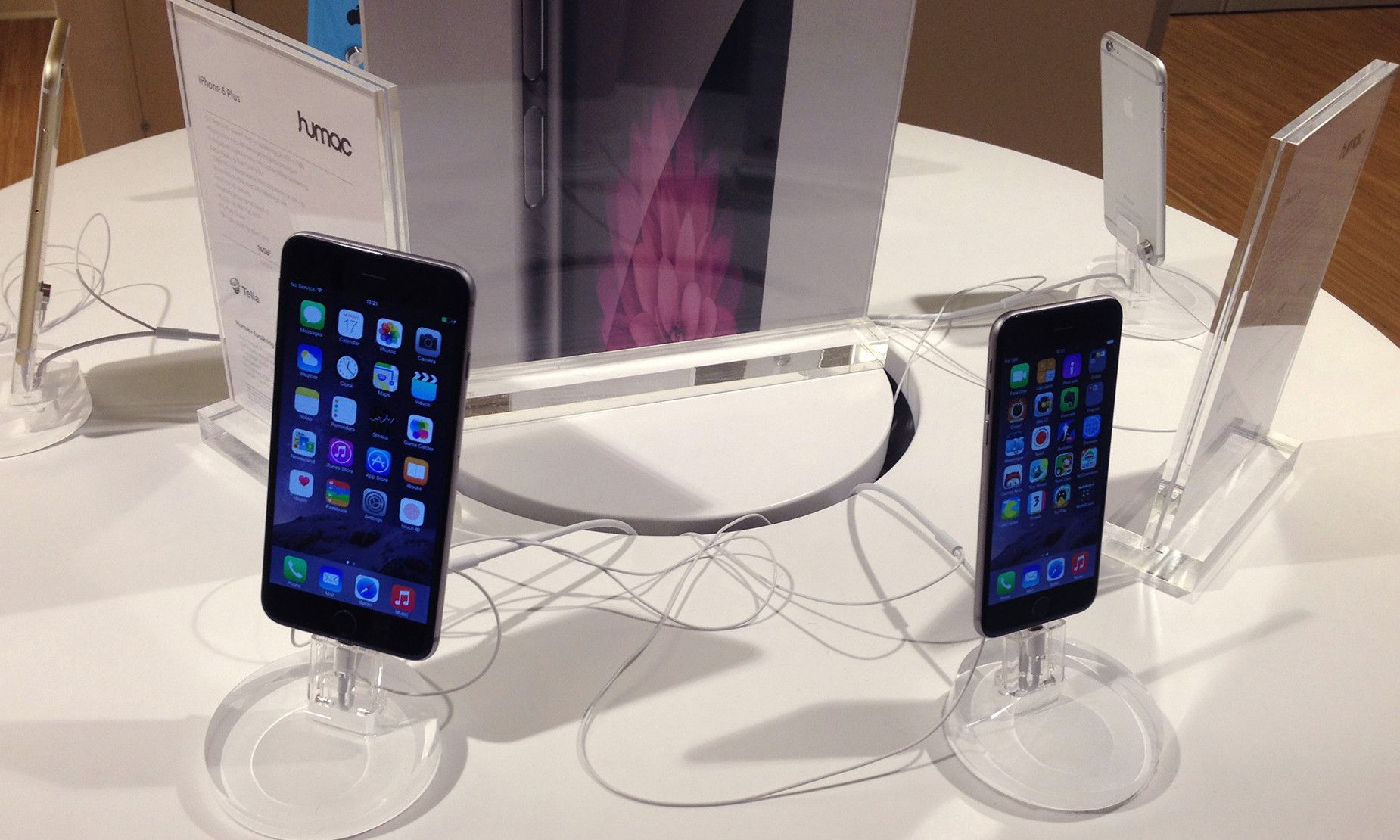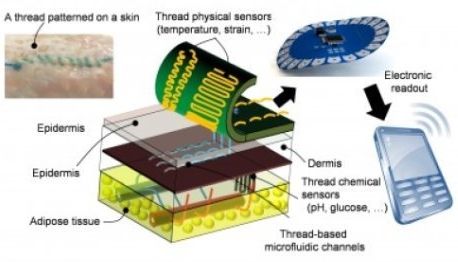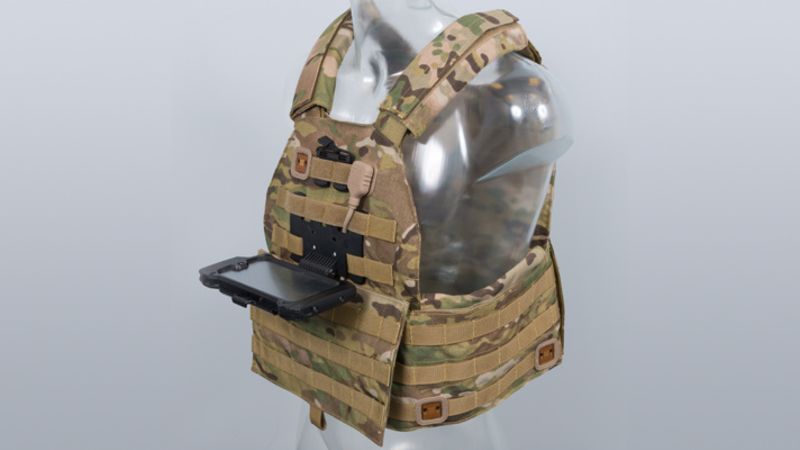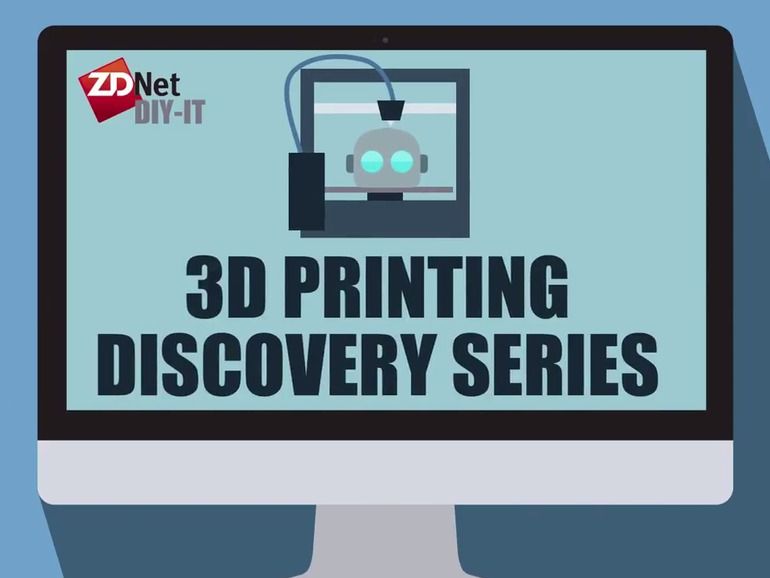Archive for the ‘mobile phones’ category: Page 208
Jul 28, 2016
Moving beyond semiconductors for next-generation electric switches
Posted by Karen Hurst in categories: energy, mathematics, mobile phones, quantum physics, supercomputing
Computers use switches to perform calculations. A complex film with “quantum wells”—regions that allow electron motion in only two dimensions—can be used to make efficient switches for high-speed computers. For the first time, this oxide film exhibited a phenomenon, called resonant tunneling, in which electrons move between quantum wells at a specific voltage. This behavior allowed an extremely large ratio (about 100,000:1) between two states, which can be used in an electronic device as an ON/OFF switch to perform mathematical calculations (Nature Communications, “Resonant tunneling in a quantum oxide superlattice”).
![]()
Efficient control of electron motion can be used to reduce the power requirements of computers. “Quantum wells” (QW) are regions that allow electron motion in only two dimensions. The lines (bottom) in the schematic show the probability of finding electrons in the structure. The structure is a complex oxide (top) with columns (stacked blue dots corresponding to an added element) where the electrons are free to move in only two dimensions. This is a special type of quantum well called a two-dimensional electron gas (2DEG). (Image: Ho Nyung Lee, Oak Ridge National Laboratory)
Continue reading “Moving beyond semiconductors for next-generation electric switches” »
Jul 26, 2016
Self-assembling nano inks form conductive and transparent grids during imprint
Posted by Karen Hurst in categories: innovation, mobile phones
Researchers at INM have combined a new self-assembling nano ink with an imprint process to create flexible conductive grids with a resolution below one micrometer. Your Contact Press and Public Relations: Dr. Carola Jung [email protected] Phone: +49681–9300-506 Your expert: Dr. Tobias Kraus Head Structure Formation Deputy Head InnovationCenter INM [email protected] Phone: +49681–9300-389.
Jul 26, 2016
Welcome to Lab 2.0 Where Computers Replace Experimental Science
Posted by Karen Hurst in categories: chemistry, computing, mobile phones, physics, science, solar power, sustainability

We spend our lives surrounded by high-tech materials and chemicals that make our batteries, solar cells and mobile phones work. But developing new technologies requires time-consuming, expensive and even dangerous experiments.
Luckily we now have a secret weapon that allows us to save time, money and risk by avoiding some of these experiments: computers.
Continue reading “Welcome to Lab 2.0 Where Computers Replace Experimental Science” »
Jul 24, 2016
Boss threatens to sack staff who buy an iPhone
Posted by Karen Hurst in category: mobile phones
When buying an iPhone in China can get you fired. My guess his motto is “Lets Make China Great Again”.
The patriotic boss in Hangzhou has also offered cash rewards of up to 2,500 Yuan for employees to switch to made-in-China phones.
Jul 20, 2016
Atom-scale storage holds 62TB in a square inch
Posted by Shailesh Prasad in categories: computing, mobile phones, particle physics

Storage tech doesn’t get much better than this. Scientists at TU Delft have developed a technique that uses chlorine atom positions as data bits, letting the team fit 1KB of information into an area just 100 nanometers wide. That may not sound like much, but it amounts to a whopping 62.5TB per square inch — about 500 times denser than the best hard drives. The scientists coded their data by using a scanning tunneling microscope to shuffle the chlorine atoms around a surface of copper atoms, creating data blocks where QR code -style markers indicate both their location and whether or not they’re in good condition.
Not surprisingly, the technology isn’t quite ready for prime time. At the moment, this storage only works in extremely clean conditions, and then only in extreme cold (77 kelvin, or −321F). However, the approach can easily scale to large data sizes, even if the copper is flawed. Researchers suspect that it’s just a matter of time before their storage works in normal conditions. If and when it does, you could see gigantic capacities even in the smallest devices you own — your phone could hold dozens of terabytes in a single chip.
Continue reading “Atom-scale storage holds 62TB in a square inch” »
Jul 18, 2016
Profusa to Showcase Tissue-integrated Sensors for Long-term Continuous Monitoring of Body Chemistry at the Pioneers Festival in Vienna
Posted by Klaus Baldauf in categories: biotech/medical, business, chemistry, health, mobile phones
Lumee™ tissue-O2 monitoring system slated to be available this year in Europe
SOUTH SAN FRANCISCO, Calif., May 16, 2016 — Profusa, Inc. announced today that it was selected by Pioneers, the global business relationship builder, to showcase the company’s “wear-and-forget” Lumee™ biosensor technology at the Pioneers Festival held at the prestigious Hofburg Imperial Palace in Vienna, Austria, May 24th-25th.
Making health and disease monitoring as easy as turning on your smart phone, the company’s tissue-integrated sensors for long-term, continuous tracking of body chemistry will be highlighted by Ben Hwang, Profusa’s chairman and chief executive officer, in a talk entitled, “Beyond Fitness Trackers: Let Your Body Speak.”
Jul 18, 2016
‘Smart’ thread collects diagnostic data when sutured into tissue
Posted by Karen Hurst in categories: biotech/medical, chemistry, computing, health, mobile phones, nanotechnology, wearables
Way cool! Your stitches monitors and reports your progress to your doctor/s.
BTW — In 1999, I told a guy from Diamond Intl. that the thread in our clothing would be able to do this in the next 15 to 20 years. He laughed at me; never say never.
For the first time, researchers led by Tufts University engineers have integrated nano-scale sensors, electronics and microfluidics into threads — ranging from simple cotton to sophisticated synthetics — that can be sutured through multiple layers of tissue to gather diagnostic data wirelessly in real time, according to a paper published online July 18 in Microsystems & Nanoengineering. The research suggests that the thread-based diagnostic platform could be an effective substrate for a new generation of implantable diagnostic devices and smart wearable systems.
Continue reading “‘Smart’ thread collects diagnostic data when sutured into tissue” »
Jul 16, 2016
This Tablet-Toting Military Vest Is Actually a Giant Battery
Posted by Karen Hurst in categories: energy, military, mobile phones
Smartphones and tablets are being used more frequently in the battlefield, and that means that battery power is more important than ever. Soldiers often carry spare battery chargers in the 90-pound combat packs they carry into war zones, but the batteries are often lost or broken. BAE Systems wants to help lighten the load with its new system that lets soldiers plug electronics directly into their clothing.
The BAE Systems Broadsword Spine is a harness that can be sewn into a soldiers vest, jacket, or belt that carries a battery pack and hides charging wires. The harness places the battery pack on the small of a soldier’s back and includes eight conductive fabric conduits that can be used to connect to a USB port.
Jul 15, 2016
How to add a smartphone-controlled brain to your 3D printer for about fifty bucks
Posted by Karen Hurst in categories: 3D printing, mobile phones, neuroscience
Pretty cool.
Ready for some buzzword salad? David Gewirtz combines OctoPrint with OctoPi on the Raspberry Pi to drive his LulzBot Mini 3D printer. It’s actually harder to say than to do. Read on to learn how.
